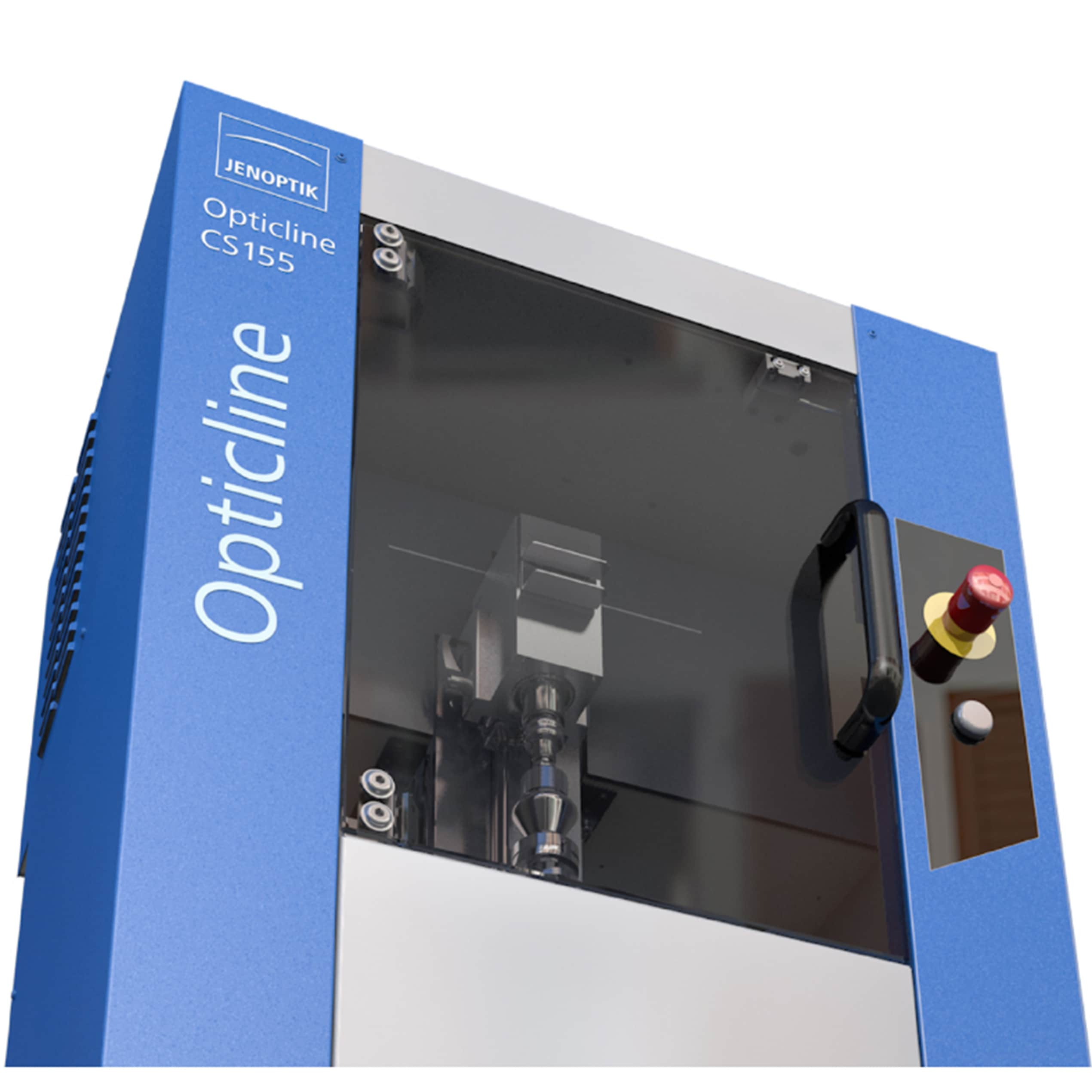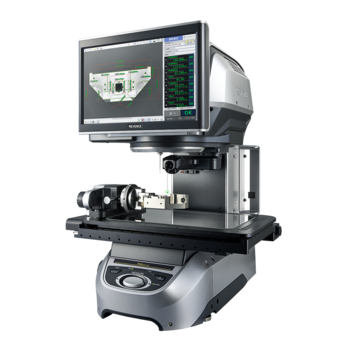Comprehending Exactly How Optical Dimension Equipment Enhance Quality Assurance Processes
When you're aiming to enhance quality assurance procedures, recognizing optical measurement systems is vital. These modern technologies offer accurate, non-contact measurements that can transform your assessment approaches. By leveraging innovative strategies, you can streamline operations and reduce errors. Exactly how precisely do these systems integrate into existing process, and what benefits do they bring? Let's check out the essential elements that make optical measurement a game-changer in quality administration.

The Basics of Optical Dimension Systems
Optical measurement systems play an important role in guaranteeing item top quality throughout different industries. These systems make use of light-based modern technologies to collect accurate information concerning physical qualities, such as dimensions, surface area coating, and shade. By utilizing electronic cameras, sensors, and lasers, you can attain non-contact measurements that minimize the threat of damaging fragile items.
Comprehending the principles of these systems is essential for effective quality assurance. They operate concepts like refraction, reflection, and diffraction, permitting you to examine various materials and forms. The accuracy and speed of optical dimensions allow real-time surveillance, which assists you identify flaws early in the manufacturing process.
Moreover, these systems can be integrated with software program for enhanced information evaluation, creating a detailed quality administration approach. By leveraging optical measurement systems, you not only enhance productivity however additionally guarantee your products satisfy rigorous quality requirements, eventually boosting customer complete satisfaction.
Sorts Of Optical Dimension Technologies
Numerous types of optical dimension technologies are offered, each developed to satisfy certain needs in quality assurance. You might come across laser triangulation, which gauges range by analyzing the angle of a reflected laser beam. This technology is suitable for recording specific measurements in 3D room.
An additional choice is structured light, where you predict a collection of light patterns onto a surface to develop a comprehensive 3D model. This technique functions well for complicated geometries.
Then there's interferometry, which can find minute adjustments in surface area profiles by examining the disturbance patterns of light waves. This is specifically valuable for applications calling for nanometer accuracy.
You may also consider optical coherence tomography, which provides high-resolution photos of inner functions without damaging the object. Each technology offers various requirements, so choosing the best one is important for achieving highest quality control outcomes.
Trick Advantages of Optical Measurement in Quality Assurance
When it comes to quality assurance, leveraging optical dimension technologies can significantly boost precision and effectiveness. These systems allow you to record in-depth measurements quickly, lowering the moment needed for inspections. You'll see that optical measurements can recognize also the smallest issues that may go undetected with standard methods, making certain product uniformity.
Furthermore, making use of optical measurement systems often brings about decreased waste and revamp, as you catch problems early in the manufacturing process. You'll additionally appreciate the non-contact nature of lots of optical methods, which lessens damages to delicate elements throughout assessment. This versatility permits a more comprehensive range of applications throughout various materials.
With real-time information collection, you can make educated choices swiftly, enhancing your quality control procedures (optical measurement systems). Eventually, including optical measurement into your high quality control approach not just increases efficiency however additionally boosts consumer complete satisfaction by supplying higher-quality products consistently
Exactly How Optical Dimension Equipment Improve Precision and Precision
Optical measurement systems increase accuracy and accuracy by boosting dimension resolution, permitting you to detect even the smallest variations. With real-time data analysis, you can make immediate adjustments and decisions, ensuring your processes remain on track. This combination not just improves item top quality but additionally streamlines your quality assurance efforts.
Enhanced Measurement Resolution
By leveraging innovative innovations, optical dimension systems considerably boost measurement resolution, leading to boosted accuracy and accuracy in top quality control. You'll observe a significant difference in the quality of measurements, permitting you to recognize also the tiniest discrepancies from specifications. Eventually, boosted measurement resolution not just increases item quality however additionally optimizes resource application, guaranteeing that you satisfy consumer expectations regularly.
Real-Time Information Evaluation
Although typical dimension systems commonly depend on delayed information handling, real-time data evaluation in optical measurement systems transforms the way you check high quality. You'll experience improved accuracy because you can immediately contrast measurements versus predefined requirements. Additionally, real-time information assists you build up beneficial insights over time, adjust your top quality control processes.
Incorporating Optical Measurement Into Existing Quality Assurance Processes
Integrating optical measurement into your existing quality assurance processes can considerably boost accuracy and performance. By integrating optical dimension systems, you can improve information collection, decreasing human mistake while enhancing the rate of evaluations. Beginning by identifying vital points in your assembly line where optical dimensions will supply the most value.
Following, educate your team on the brand-new modern technology, ensuring they recognize how to utilize the systems properly. This training will assist them analyze results swiftly and properly.
You should likewise develop a method for incorporating optical information right into your existing quality administration software program. This assimilation enables real-time analytics and reporting, improving decision-making.
Routinely examine the information and responses from your group to identify any areas for enhancement. With these steps, you'll not only boost your top quality control procedures however additionally cultivate a culture of constant improvement within your organization.
Situation Researches: Effective Application of Optical Dimension Equipments
In this area, you'll discover how optical measurement systems have transformed quality assurance in markets such as aerospace and vehicle production - optical measurement systems. You'll see real-world examples of how these innovations enhanced accuracy and efficiency. These study highlight the tangible advantages of incorporating optical systems right into production processes
Aerospace Sector Applications
As the aerospace sector encounters boosting demands for precision and efficiency, firms are transforming to optical measurement systems to enhance their quality control procedures. These systems, like laser scanning and 3D imaging, give exact measurements of components, ensuring they fulfill stringent safety and security standards. A leading aircraft maker incorporated optical measurement modern technology to examine turbine blades, lowering examination time by 50% while enhancing precision. One more case included a satellite producer using optical systems to determine intricate geometries, which decreased mistakes in assembly and significantly lowered rework prices. By embracing these sophisticated innovations, you can not only improve your quality assurance processes but also enhance product dependability and safety, inevitably causing higher client fulfillment and count on in your aerospace products.
Automotive Production Success
Optical dimension systems have additionally made substantial strides in the vehicle production market, where precision is vital to automobile efficiency and security. BMW incorporated optical measurement for body assembly, making sure components fit flawlessly, which decreased rework and increased production effectiveness. These situation researches show how optical measurement systems empower you to achieve tighter tolerances, decrease waste, and boost general product quality.
Future Fads in Optical Measurement and Quality Assurance
While improvements in innovation proceed to improve the production landscape, the future of optical measurement and quality assurance looks encouraging - optical measurement. You'll see a significant shift in the direction of automation and AI combination, enabling systems to analyze information in real-time. This means quicker decision-making and lowered human mistake, eventually enhancing item top quality
Moreover, as 3D imaging technology enhances, you'll profit from more exact measurements of complex geometries, making it less complicated to maintain tight tolerances. The rise of cloud-based solutions will certainly also allow you to accessibility data remotely, promoting collaboration and enhancing operations.
In addition, sustainability will certainly play an important role in future advancements. Anticipate optical dimension systems to focus on power effectiveness and waste reduction, lining up with worldwide ecological goals. By embracing these patterns, you can assure your quality assurance processes stay advanced, aiding your organization thrive in a significantly competitive market.
Often Asked Concerns
What Industries Benefit Many From Optical Dimension Solutions?
You'll locate industries like production, aerospace, and automotive benefit most from optical dimension systems. These markets depend on accurate measurements for quality control, making sure items fulfill rigorous requirements and boosting total functional original site effectiveness.
Just how Do I Select the Right Optical Measurement System?
To choose the appropriate optical dimension system, evaluate your certain requirements, consider the kind of dimensions you need, assess the system's precision, and assure it fits your budget and functional demands.
What Prevail Difficulties in Implementing Optical Measurement Equipments?
You'll deal with challenges like combination with existing systems, making certain accurate calibration, educating staff efficiently, and managing costs. Determining these obstacles early aids you develop techniques to overcome them and effectively implement optical dimension systems.

Are There Training Resources Available for Optical Dimension Technologies?
Yes, there're numerous training resources offered for optical measurement innovations. You can locate on-line programs, webinars, and workshops provided by industry professionals or organizations. These resources can aid you efficiently implement and make use of these innovative systems.
Just How Do Optical Measurement Solutions Compare to Standard Measurement Techniques?
Optical dimension systems use greater accuracy and speed compared to traditional techniques. They reduce human error, make it possible for non-contact measurements, and offer real-time data analysis, making them extra efficient for numerous applications in quality control.
Final thought

Optical measurement systems enhance precision and precision by enhancing measurement resolution, allowing you to identify also the tiniest variations.By leveraging advanced modern technologies, optical measurement systems substantially enhance dimension resolution, leading to boosted accuracy and accuracy in high quality control.Although traditional dimension systems often rely on explanation delayed information handling, real-time information analysis in optical measurement systems revolutionizes the means you check quality.As the aerospace market encounters boosting demands for precision and effectiveness, companies are turning to optical measurement systems to improve their top quality control procedures. Just How Do Optical Dimension Solutions Contrast to Typical Dimension Methods?